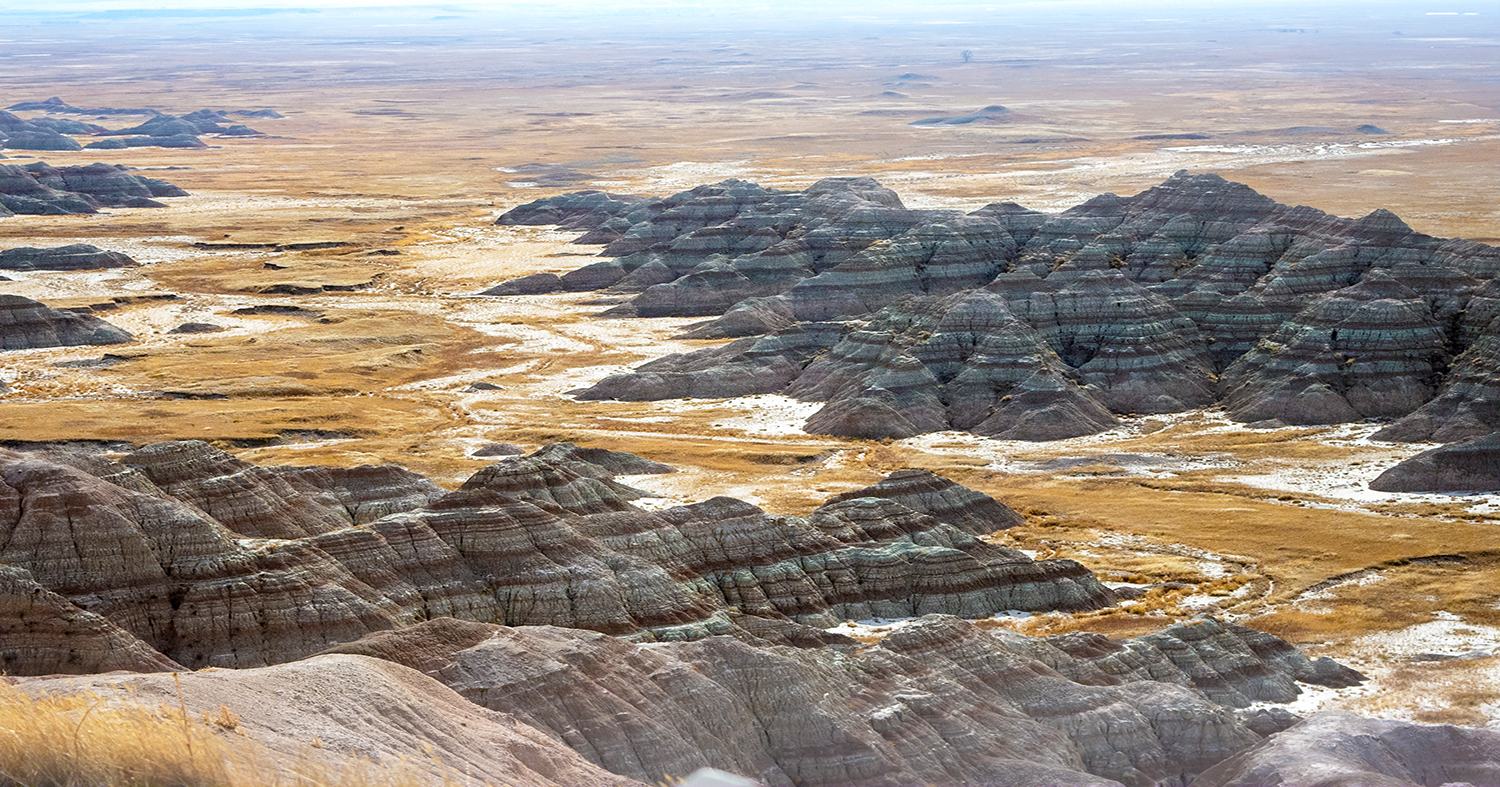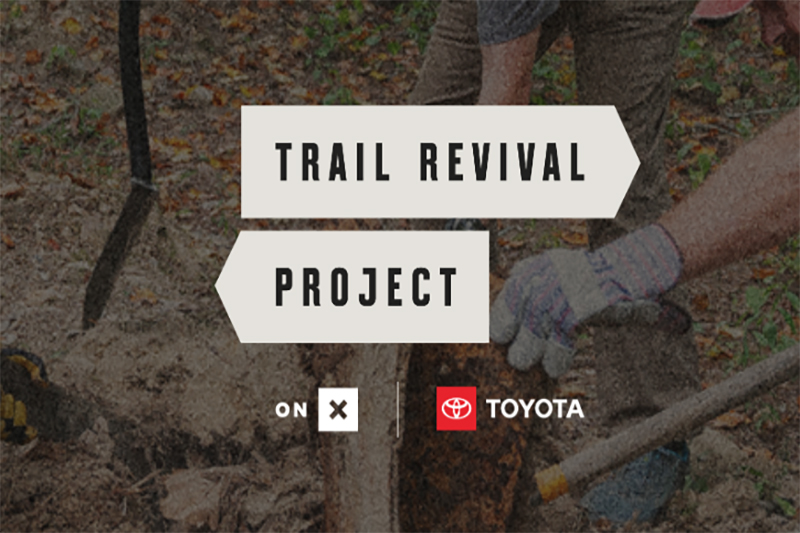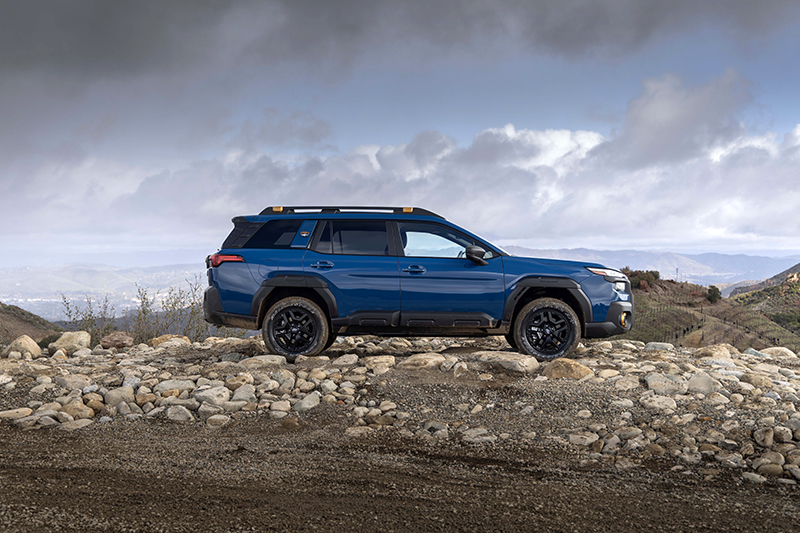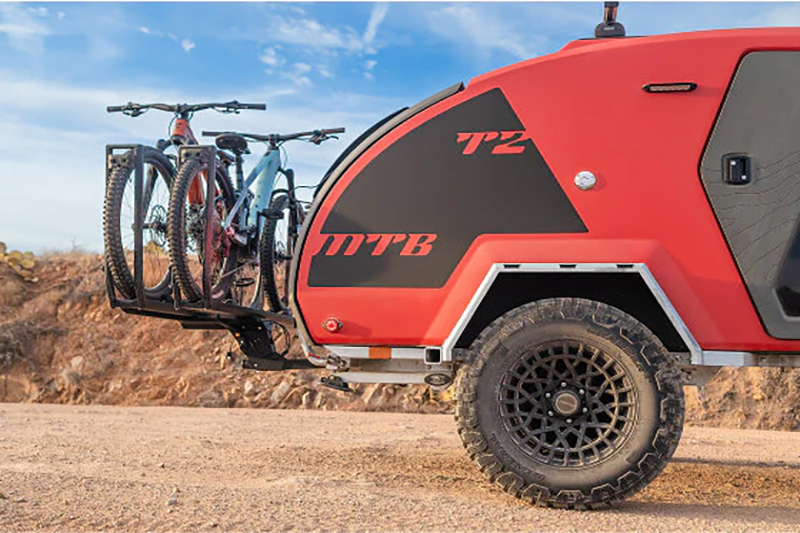Exploring Wind Cave and Badlands National Park in the Mount Rushmore State of South Dakota
It was early November. We had been in town for several weekends and were eager to squeeze in a few more days of camping before winter hit. Rather spontaneously, we decided to take a weekend to check off another national park or two from our list while enjoying some quiet nights of camping. Our first instinct was to head south from our home in Colorado to New Mexico, where it was warm. But we figured that half of Denver would have the same idea. Instead, we drove in the opposite direction, north to South Dakota.
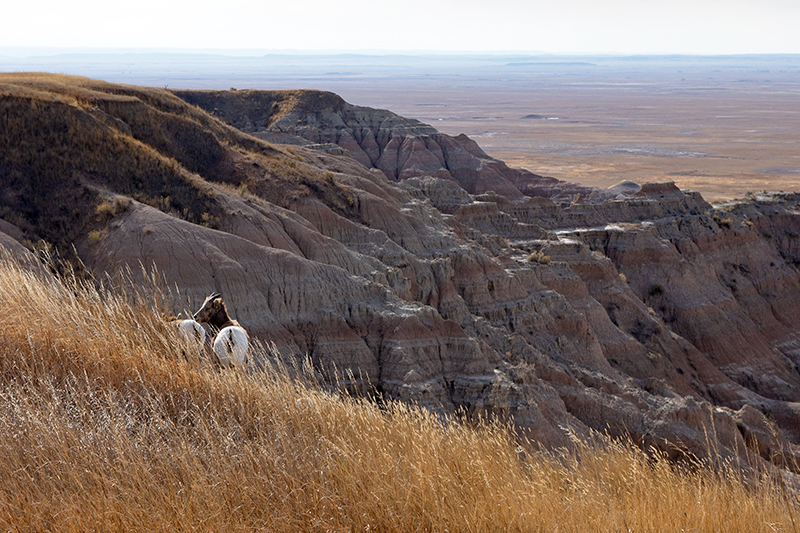
Mountain sheep grazing above the cliffs in Badlands National Park
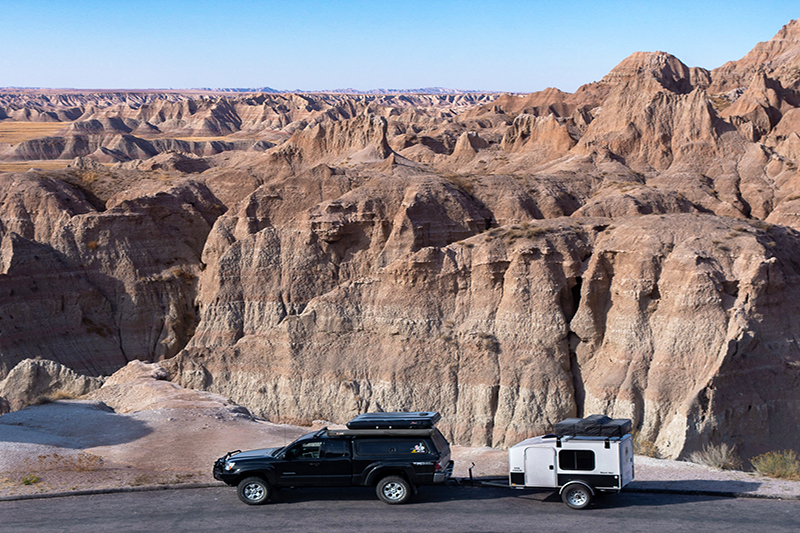
Our rig and gear for this trip: a 2012 Tacoma towing a Hiker trailer
Without the goal of visiting every national park in the back of my mind, it would never have occurred to me to visit South Dakota. But the chance to visit both Wind Cave National Park and Badlands National Park seemed well timed, and both are located in the southwest corner of “The Mount Rushmore State.” We rented a Hiker Trailer to pull behind our Tacoma, providing added space and creature comforts. With nights getting cold, it was nice to be able to bring extra blankets and have our clothing bags conveniently near.
We left Denver right after work on a Friday and drove to Nebraska, where we camped off a dirt road in a national forest as the sun set. Nebraska is open country with minimal public land compared to most of the west. Since so much of the state is well suited to agriculture, it’s easy to understand why. In fact, the public land we camped on was being leased for grazing cattle.
The next day we drove straight north to Wind Cave National Park, located in the Black Hills National Forest. To the unsuspecting eye, Wind Cave appears to be a peaceful and abundant wildlife sanctuary. Above ground, the rolling hills are filled with bison, elk and prairie dogs. But below the prairie lies one of the longest and most complex caves in the world. It is named for the barometric winds that gust in and out of the small cave entrance, and which led to its discovery. Before white settlers “discovered” the cave in 1881, native Americans of the area had many stories about a hole in the Black Hills that blows wind. In 1903, Wind Cave was the first cave in the world to become a national park.
We booked a tour for the afternoon and spent the morning perusing the educational exhibits in the visitor’s center and hiking a short trail to an observation point. When our tour began, the guide took us first to the original cave entrance. It is remarkably small, limiting the initial exploratory efforts to the smallest people who could squeeze through. Next, we entered through a door to a pressure-controlled chamber. This manmade entrance was designed to keep the original entrance and its wind patterns intact.
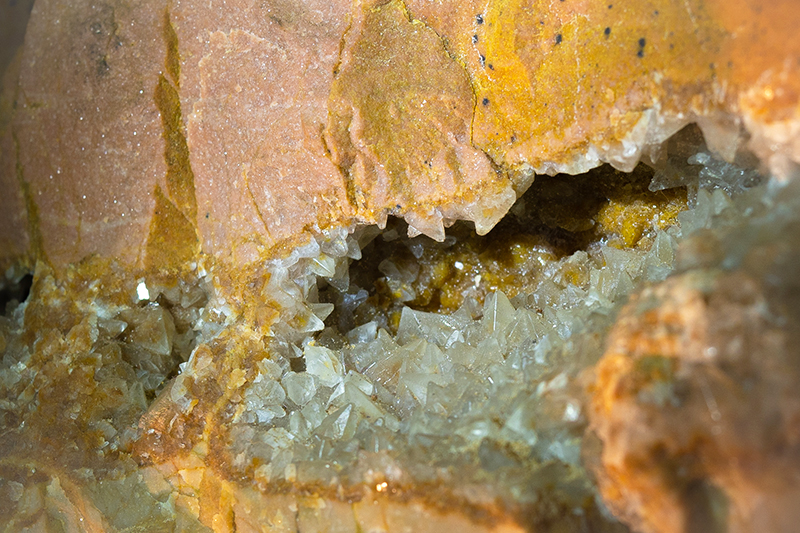
Dogtooth Spar formations (calcite crystals) in the Wind Cave

Exploring the rock formations in Badlands National Park. Watch your step!
I have been through several caves around the United States, but what followed was nothing like any of them. As we walked down the narrow cave tunnel we soon spotted the beautiful formations that make Wind Cave National Park unique. These cave formations, or speleotherms, develop from deposits of calcite resulting from the seeping of water through limestone into the cave. The most distinctive speleotherm at Wind Cave, seldom found elsewhere, is boxwork, which takes the shape of fins projecting from cave surfaces, forming a honeycomb pattern.
We camped that night in one of Wind Cave’s established campgrounds and had it all to ourselves, except for one solo traveler who joined us by the campfire. The pristine soundscape and remarkably clear, starry skies made for an incredible evening of quiet and relaxation. We enjoyed dinner while keeping warm by the campfire and trying to spot constellations.
The next day we headed for Badlands National Park, less than two hours east of Wind Cave. Despite the short distance, the landscape is dramatically different. A harsh and ragged land begins abruptly where the grassy plains end. The rugged spires and deep canyons of the Badlands were formed by mineral deposits over tens of millions of years, followed by relatively rapid erosion over the last 500,000 years. What was once a flat flood plain was cut by rivers into dramatic formations rich with fossil beds.
Named Mako Sica by the native Lakota people, Badlands’ 244,000 acres were designated a national monument in 1939 and a national park in 1978. During our visit, the park was devoid of all but a few scattered tourists, and we felt small and alone among the grand and empty landscape. It felt alien and, for a moment, it was easy to imagine what this place was like thousands of years ago.
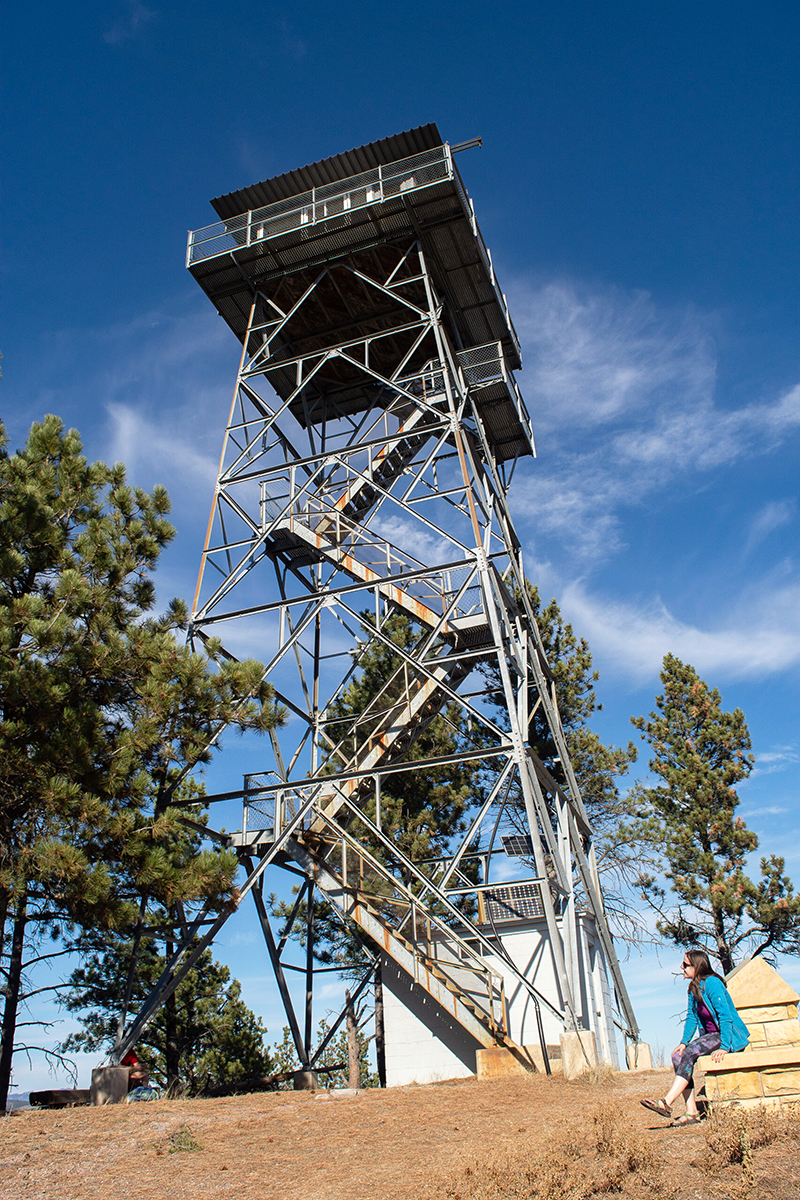
Lookout at the end of our hike in Wind Cave National Park
Along the edges of the cliffs, we crossed paths with a herd of bighorn sheep, eyeing our truck warily as they grazed. We were fortunate to come so close to these majestic creatures, and I imagine it would have been far less likely at a busier time of year.
After spending the day hunting for the park’s best scenic viewpoints, we began the trip home, ecstatic about our luck with the sunny weather, our recent wildlife encounter and the almost complete solitude we had enjoyed. It all served to affirm our choice of late fall for this visit.
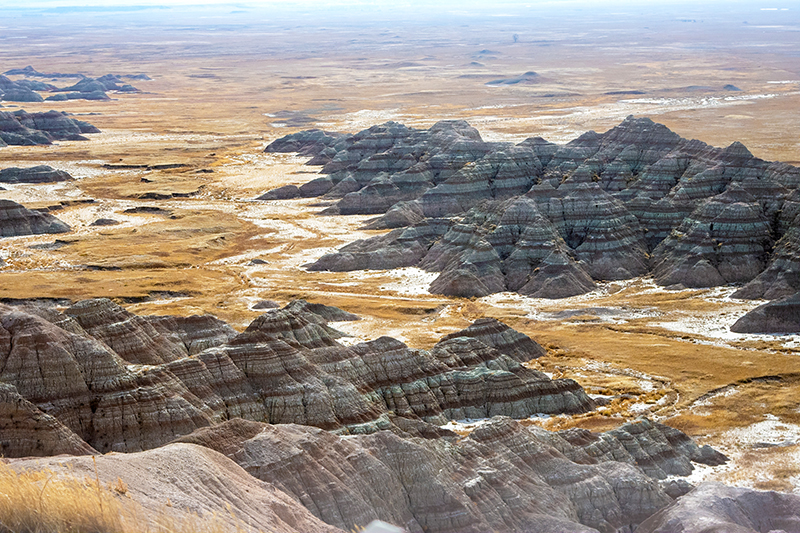
Overlook from the scenic Loop Road, Badlands National Park
These two South Dakota parks are a little off the beaten path and not featured heavily on social media. Like many national parks in the northern states, the busy season is short and those willing to wear a few extra layers enjoy the benefits of relative solitude during the off-season. With fewer people, wildlife tend to be bolder and easier to spot. Campgrounds are quiet and campsites easy to come by. These are incredible and unique places with many stories, not only about the world we see before us, but also how human history was shaped by their existence.
Sometimes going the opposite direction is the perfect plan.
Plan Your South Dakota National Park Adventure by Viewing the Following Resources
Wind Cave National Park:
https://www.nps.gov/wica/index.htm
Badlands National Park:
https://www.nps.gov/badl/index.htm
OutdoorX4 Magazine – Promoting responsible vehicle-based adventure travel and outdoors adventure


